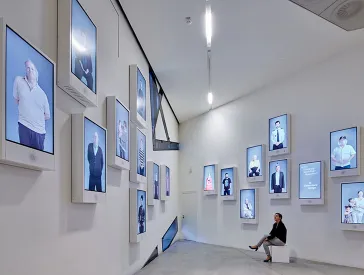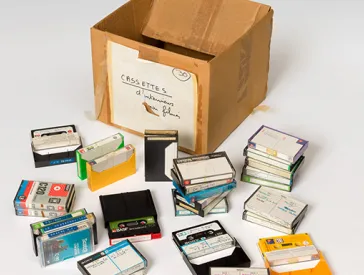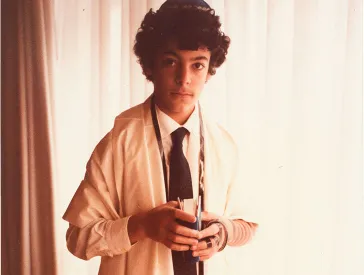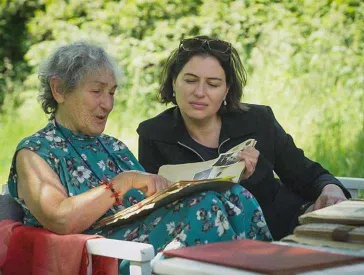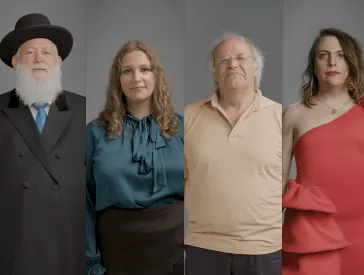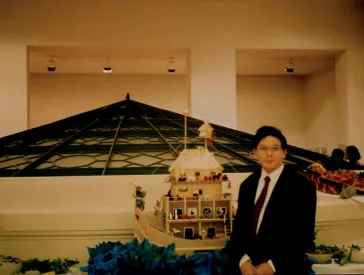Audiovisual Media Collection
Our audiovisual media collection encompasses both analog and digital sound and image carriers. These include historical sound recordings, family films, video art and in-house productions that were created for exhibitions.
Family and Amateur Films
The collection focuses on one-off, private films and video recordings from the 1920s to the present day. We collect family films and amateur films as a key component of our audiovisual heritage. They provide insights into everyday Jewish life, religious traditions in regions and families and the interior design of private dwellings and Jewish institutions.
Interviews
Video and audio interviews document the changes in Jewish self-perceptions and provide a rich source for historical research. We run a number of projects in this area and collect interview material that has been generated by research projects and exhibitions elsewhere.
Media Art
The artistic works that we have acquired in recent years include the 3-channel video installations Drummerrsss by Gilad Ratman (2020) and Malka Germania by Yael Bartana (2021), as well as Neuland, an eight-part audio and video installation by Yael Reuveny (2023), all of which were commissioned by the Jewish Museum Berlin.
Lanzmann Collection
The Lanzmann Collection is an extraordinarily valuable holding. Comprising around 220 hours of audio recordings, it documents the research and preliminary interviews conducted by Claude Lanzmann and his team in different countries and many different languages before the filming of Shoah. In 2023, the audio recordings, together with Lanzmann’s monumental film, were inscribed into the UNESCO register of the world’s documentary heritage. They will be made accessible in their entirety in the years to come.
Audio cassette tapes from the Lanzmann Collection; Jewish Museum Berlin, photo: Roman März
How can I donate objects, photographs, and documents to the museum?
Do you own materials related to Jewish culture and history in Germany that could be of interest to us? We would be delighted to hear from you!
I would like to depict or borrow an object from your collections. Who should I contact?
Your contacts for photo permissions are Valeska Wolfgram and Birgit Maurer-Porat (T +49 (0)30 259 93 433, email: fotodoku@jmberlin.de). Please note that the processing time for requests can take between 4 and 6 weeks.
Loan requests must always be made six months before the beginning of the exhibition. (Extensive requests require eight months.) Requests must be made in writing to the director (Hetty Berg, Stiftung Jüdisches Museum Berlin, Lindenstr. 9-14, 10969 Berlin).
How can I conduct research using the museum’s archive, collections, and library?
Our Reading Room is open to the public. You can also research using our library’s holdings and some of our collection’s holdings online. To view additional holdings, please contact the responsible curators.
Contact
Dr. Tamar Lewinsky
Curator of Audiovisual Media
T +49 (0)30 259 93 458
t.lewinsky@jmberlin.de
- Address
Jewish Museum Berlin
Lindenstraße 9–14
10969 Berlin
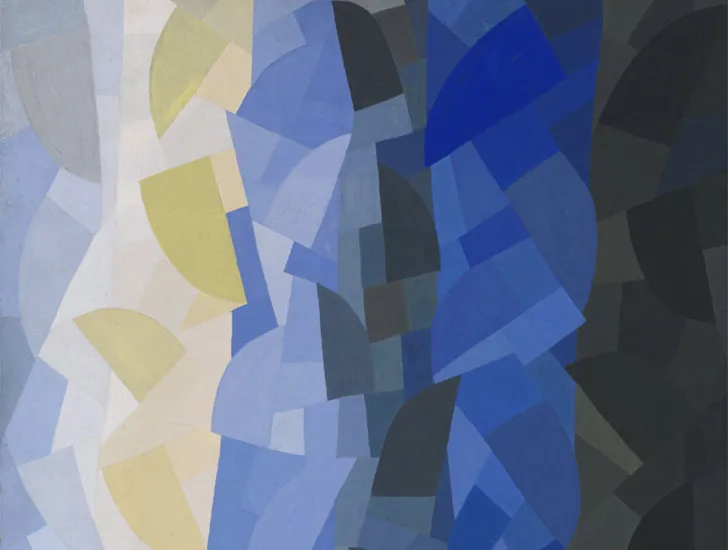
Our Collection
An overview
- The objects we collect: information & FAQ
- Search our Collection: a growing part of our collection is digitally accessible and searchable (in German)
Details
- Archive: documenting Jewish life
- Current page: Audiovisual Media: historic sound recordings, family films and video art
- Library: books about Jewish art, culture, and history
- Fine Arts: Jewish history from the perspective of visual culture
- Photography: from the beginnings of photography to the present day
- Jewish Object: Material Culture: objects and textiles for nonreligious purposes
- Jewish Object: Applied Arts: objects produced by German-Jewish craftspeople and companies
- Jewish Object: Judaica: ritual and everyday items of religious purpose
Digital Content
- Online Showcase: digital presentation of our collection holdings, video projects, and more
- Object in Showcase: stories from our collection
See also
- The History of Our Collection: learn about the initial inspiration and transition to today's museum
- Our Collection Management: responsibilities and contact information
- Sources of Collection Holdings: in publications of the Berlin museum (1978 to 1995)
- Provenance Research: unveiling the origins of our objects
- Conservation: how to presperve our objects for future generations
